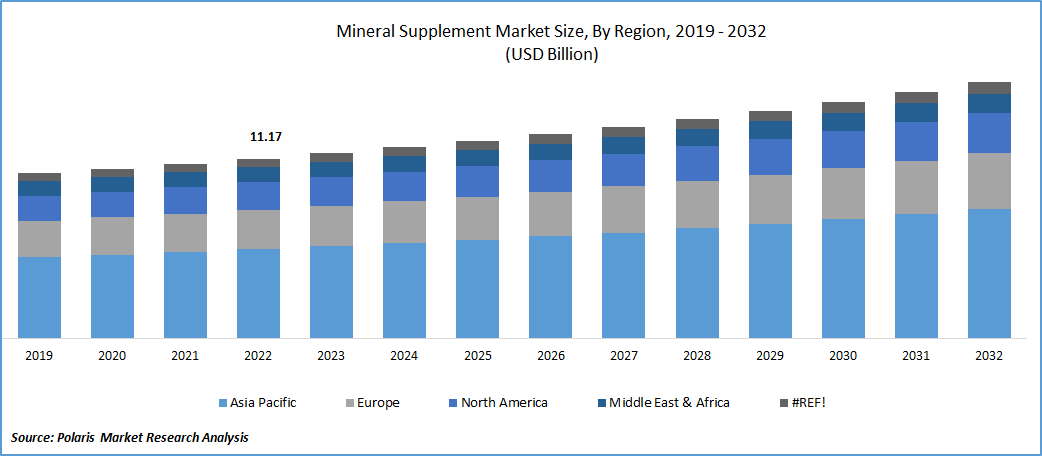
Metalworking Fluids Market Share, Size, Trends, Industry Analysis Report, By Product (Mineral, Synthetic); By End-use (Machinery, Transportation Equipment); By Industrial End-use; By Application; and Segment Forecasts, 2024 - 2032
- Published Date:Jan-2024
- Pages: 115
- Format: PDF
- Report ID: PM3725
- Base Year: 2023
- Historical Data: 2019-2022
Report Outlook
The global metalworking fluids market was valued at USD 11.51 billion in 2023 and is expected to grow at a CAGR of 3.70% during the forecast period.
Market is expected to be fueled by a rising demand for automotive & heavy industry machinery. Key sectors like machinery, metal fabrication, & transportation equipment are playing a significant role in driving the expansion of this market. Crude oil serves as the fundamental source material for producing Metal Working Fluids (MWFs). Through processes of refining, treatment, & blending, crude oil is transformed into neat cutting oils, & corrosion-preventive oils, which are in high demand. Base oil, a major component derived from the crude oil, represents nearly, 40 percent of the total cost of the MWFs.

To Understand More About this Research : Request a Free Sample Report
The production of base oil involves refining and heating crude oil, and it serves as a key component in the manufacturing of motor oils, lubricants, and MWFs. The growth of the automotive industry is expected to play a significant role in driving the demand for this product. Its usage in the automotive sector is attributed to its ability to reduce friction between the workpiece and the tool, remove metal chips, provide high surface quality, and prolong tool life. Metalworking fluids contribute to enhancing machining processes, thereby increasing machine production volumes. Consequently, the demand for metalworking fluids is anticipated to remain steady throughout the projected period.
As a result, the usage of MWFs has experienced significant market penetration in the machinery and transportation equipment sectors. The expansion of the heavy machinery industry in the emerging nations of Asia Pacific & South America is projected to drive the market forward. The increasing exploration and production activities in the oil and gas sector, particularly by the Chinese petro firms have played a crucial role in influencing the demand for the MWFs in oil & gas industry.

Industry Dynamics
Growth Drivers
Expansion of the automotive industry is anticipated to serve as a major catalyst for the market.
Metalworking fluids find extensive application in the automotive sector owing to their ability to reduce friction between the workpiece and the tool, enhance surface quality, remove metal chips, and extend the lifespan of tools. By improving the efficiency of machining operations, metalworking fluids contribute to higher machine output.
The production of passenger vehicles in India has experienced a notable surge in recent years. Data from the Society of Indian Automobile Manufacturers (SIAM) reveals that the production of passenger vehicles reached 3,650,698 units during the period of 2021-2022. This indicates a substantial growth of 19% compared to the previous year (2020-2021). Such a significant increase in production has played a pivotal role in supporting the overall metalworking fluids market growth in the automotive sector. China's 14th Five-Year Plan presents a significant opportunity for the country to advance its agricultural and rural transformation. This, in turn, leads to an increased utilization of heavy machinery in agricultural and construction activities.
Report Segmentation
The market is primarily segmented based on product, application, end use, vertical and region.
|
By Product |
By Application |
By End Use |
By Vertical |
By Region |
|
|
|
|
|
To Understand the Scope of this Report : Speak to Analyst
By Product Analysis
Mineral segment accounted for the largest market share in 2022
Mineral segment held the largest share. This substantial share can be attributed to the widespread usage of mineral-based oils, which are preferred due to their lower cost. Price-conscious consumers, particularly small- and medium-scale manufacturers, tend to opt for mineral oil-based Metalworking Fluids (MWFs). This consumer behavior is expected to impact the market's growth throughout the forecast period. Furthermore, mineral-based fluids find application in various machining processes, including turning, grinding, broaching, drilling, and milling.
Synthetic segment is likely to grow at fastest growth rate. This growth can be attributed to the advantageous properties exhibited by synthetic MWFs, such as improved tool lifespan and excellent surface finish. The demand for synthetic oils is driven by their ability to reduce friction between workpieces, eliminate waste, and extend the lifespan of MWFs. In recent years, large-scale manufacturers in various countries have increasingly adopted semi-synthetic MWFs, leading to a rise in the penetration of synthetic MWFs. This trend is expected to continue during the projected period.
Additionally, growing concerns regarding the use of petroleum-based products have resulted in stringent environmental regulations and government initiatives promoting the use of environmentally friendly products. Consequently, the production of bio-based MWFs has increased to meet these demands.
By End Use Analysis
Machinery segment held the significant market revenue share
Machinery segment held the majority market share in terms of revenue. his dominance can be attributed to the high demand for MWFs in various machinery applications, including agriculture equipment, & automotive components. The growing demand from construction equipment manufacturers is expected to contribute significantly to the overall growth of the MWFs market. Metalworking fluids are essential in machining operations as they help extend the lifespan of the sump, resulting in cost savings for manufacturers in the long term.
Transportation equipment segment is likely to exhibit fastest growth rate. This growth can be attributed to the strong demand for MWFs in transportation equipment, fueled by infrastructure development and increased product demand in the sector. MWFs play a crucial role in operations where efficient heat dissipation is essential for effective machining and the production of high-quality products. They find application in various forms of transportation equipment, including high-performance railway engines, ships, and aircraft. The primary areas where these fluids are utilized to enhance engine performance are Maintenance, Repair, and Overhauling (MRO) activities.
By Application Analysis
Neat cutting oil held the significant market revenue share
Neat oil segment held the majority market share in terms of revenue. This dominance can be attributed to the increasing demand for neat cutting oils from various sectors, including automobile, aerospace, & construction. Neat cutting oils find application in a wide range of machining processes and cutting operations. The emerging economies of Asia Pacific, with their high-volume manufacturing industry, have a substantial demand for neat cutting oils due to their cost-effective solutions.
Water cutting oil segment projected to witness steady growth rate. The growth of this segment can be attributed to the increasing consumption of water-based fluids in complex machineries. Such fluids play a crucial role in procedures where effective heat dissipation is necessary for successful machining and the production of the high-quality products. Prior to usage in the machine shop, these fluids are diluted in the water and employed in various cutting activities, including drilling, milling, and grinding. They are particularly used in heavy equipment production to regulate the temperature of the machining process.

Regional Insights
APAC region dominated the global market in 2022
APAC dominated the global market. The strong market performance in the region can be attributed to the growing number of manufacturing units in the area. Specifically, China and India are expected to play a significant role in driving the demand for both mineral and synthetic MWFs. The market for synthetic MWFs is anticipated to witness substantial growth in this region.
North America projected to grow at the fastest rate. MWF manufacturers in the region offer a wide range of products, including mineral, synthetic, and water-soluble oils, specifically designed for machining and grinding operations on both ferrous and non-ferrous metals. These MWFs are suitable for use with various types of metals, such as ferrous metals & non-ferrous metals.

Key Market Players & Competitive Insight
Key players in the market are constantly upgrading their technologies to stay ahead of the competition and to ensure efficiency, integrity, and safety. These players focus on partnership, product upgrades, and collaboration to gain a competitive edge over their peers and capture a significant market share.
Some of the major players operating in the global market include
- Blaser Swisslube
- BP plc
- Chevron Corp.
- China Petroleum & Chemical Corp.
- Exxon Mobil
- FUCHS
- Houghton International
- Kuwait Petroleum
- Total
Recent Developments
- In February 2023, Univar Solutions & Milliken have entered into an agreement for lubricants and metalworking fluids in the North America.
Metalworking Fluids Market Report Scope
|
Report Attributes |
Details |
|
Market size value in 2024 |
USD 11.87 billion |
|
Revenue forecast in 2032 |
USD 15.90 billion |
|
CAGR |
3.70% from 2024 – 2032 |
|
Base year |
2023 |
|
Historical data |
2021 – 2022 |
|
Forecast period |
2024 – 2032 |
|
Quantitative units |
Revenue in USD billion and CAGR from 2024 to 2032 |
|
Segments covered |
By Product, By Application, By End Use, By Vertical, By Region |
|
Regional scope |
North America, Europe, Asia Pacific, Latin America; Middle East & Africa |
|
Customization |
Report customization as per your requirements with respect to countries, region and segmentation. |
FAQ's
The global metalworking fluids market size is expected to reach USD 15.90 billion by 2032
Key players in the metalworking fluids market Blaser Swisslube,BP plc,Chevron Corp,China Petroleum & Chemical Corp.
North America region contribute notably towards the global metalworking fluids market
The global metalworking fluids market is expected to grow at a CAGR of 3.7% during the forecast period
Key segments in the metalworking fluids market product, application, end use, vertical and region.
